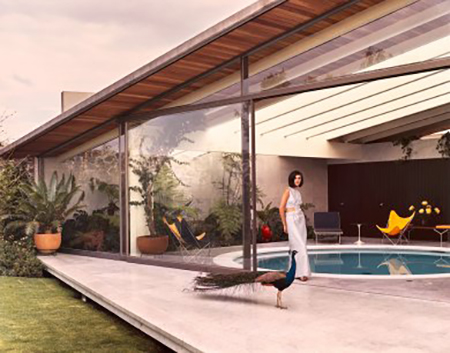
Contrinuing through April 1, 2018
The architectural renderings, furnishings, advertisements, clothing, murals, ceramics and other art objects in “Found in Translation: Design in California and Mexico, 1915-1985,” are alternatively baroque and streamlined. More significant is that many designs are so familiar to Southern Californians that it takes this exhibit to demonstrate how Mexican culture and design has infused itself into our lives, and vice-versa. “Translation” in the show’s title refers to the idea that both places have developed distinct looks and designs through translation of the other. The exhibition examines this cross-border trend through four themes: Spanish Colonial Inspiration (Spanish Baroque architecture), Pre-Hispanic Revivals (art and architecture inspired by Mexico’s ancient civilizations), Folk Art and Craft Traditions (influenced by indigenous artisans), and Modernism (European inspired architecture with a tendency toward indoor-outdoor living).
“Design in California” further explores how design and architecture have become intrinsic to the cultures and perceptions of both countries. While more than 250 pieces comprise this wide-ranging and diverse exhibition, several stand out. “Bench from Casa Zuno, Guadalajara” (c. 1925) is the type of long, carved, ultra-baroque wooden bench found in old libraries, hotels and even in craftsman-style homes. “Neo-Zapotec piano” (c. 1895), with a piano bench, also in a baroque style, has intricate carvings throughout. The more modern “Butaca chair,” designed in the 1940s, has the simplicity of mid-20th design. While the 1971 Fiberglass “Chaise Lounge” is more like an elegant sculpture than a piece of furniture. Jewelry in the show includes the indigenous style 1940 “Frida Kahlo Necklace” and another native-style piece simply titled “Necklace” from 1952, with blue and gray stones. Of particular interest is the small ceramic “Warrior” from the mid-1960s, a sculpture that is a dead-ringer for pre-Columbian work.
